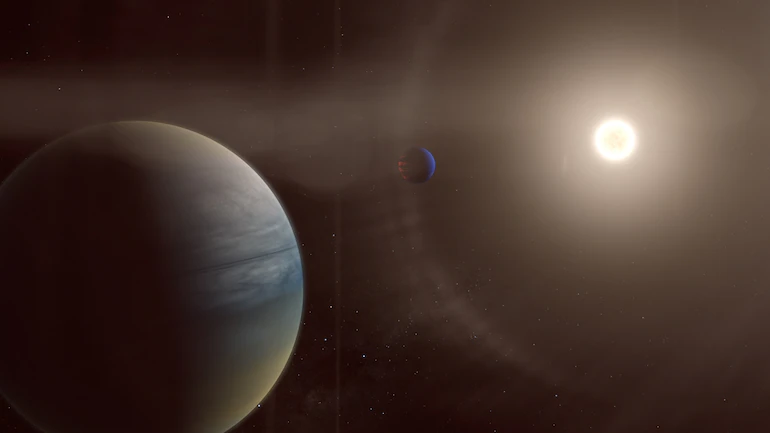Unique star system with 'super-Earths' surprises astronomers

The search for life beyond Earth has brought astronomers to a unique planetary system, which is nothing like any other observed over decades. Dubbed HD 3167, the star system has two super-Earths orbiting the star every one and 30 days, the third orbiting it every eight days.
However, like planets in our solar system going around the Sun in a flat plane orbit, the planets in the HD 3167 system orbit the star around its poles. The new revelation came as scientists studied the alignment of the exoplanets, which could be used to distinguish among concurrent evolution scenarios of the planets.
"Multi-planet systems usually host mini-Neptunes and super-Earths, whose sizes make orbital architecture measurements challenging," astronomers said in a paper published in the journal Astronomy & Astrophysics.
Astronomers first found the system in 2016 when they observed two planets, HD 3167 c and d, orbiting the star at an unusual inclination. The planets were circling their host star in a polar orbit, going above and below the poles instead of around the star's equatorial axis.
However, a new discovery has left scientists scratching their heads for an explanation as the third planet, HD 3167b, in the system does not follow the same law as the first two.
Using the Very Large Telescope in Chile, astronomers observed that the third planet circles the star on an equatorial flat planet like planets in our solar system revolve around the Sun, the planet is in a perpendicular orbit compared to the other two circling its poles.
Astronomers speculate that the unique orbit of the planets around the star could be the result of the gravitational interaction of the system with an unseen object in its outer reaches. This object could be a Jupiter-size planet orbiting the star every 80 days. In an earlier study of the system published in the journal Astronomy & Astrophysics, astronomers had studied the orbital architecture of this multi-planet system and concluded that the gravitational effect of this world could have pushed the outer two planets into their unusual orbits, while the innermost planet remained locked to the star.
"Evolution of HD 3167b has always been dominated by its interactions with the star, so that its orbit retained its original alignment, while the evolution of HD 3167c and d was influenced by secular interactions with an outer companion," the paper said.
While the system nearly 150 light-years away from Earth does not have any signs of life, its study could shed light on the evolution of the planetary systems and stars in the universe and help design the orbital architecture of exoplanets as more and more are discovered.